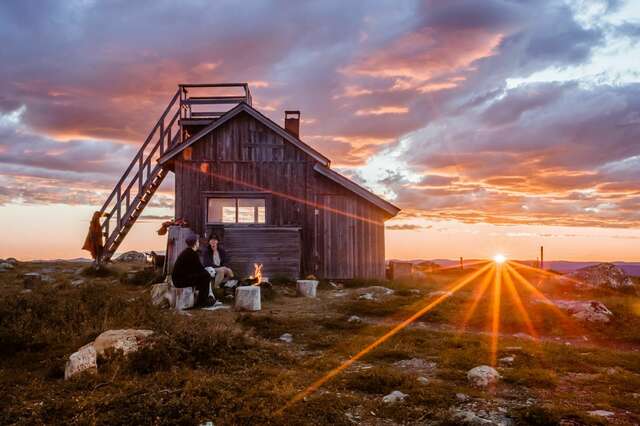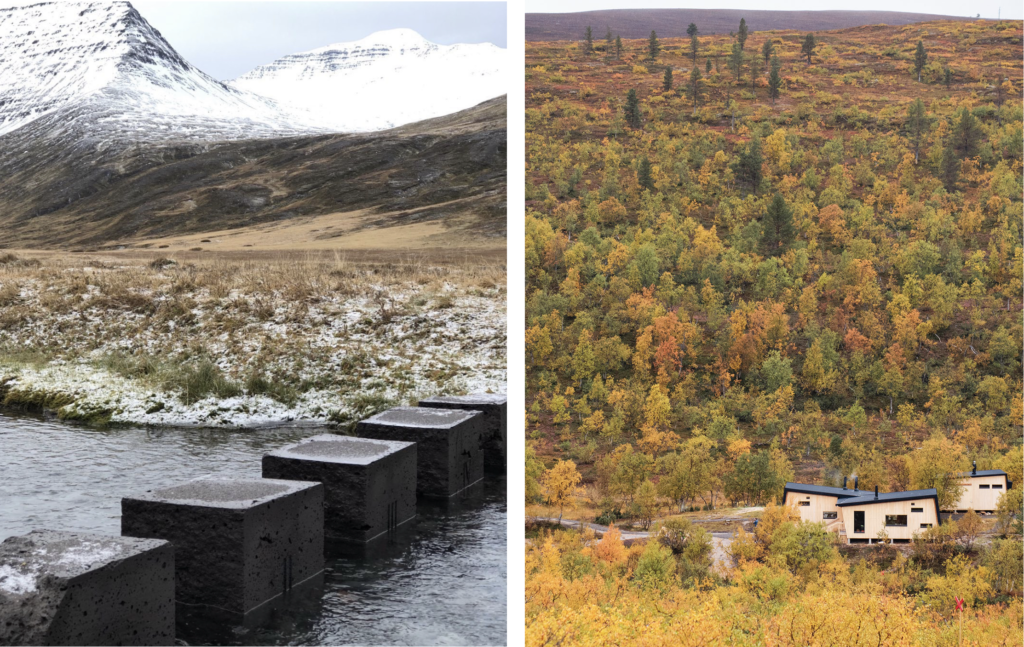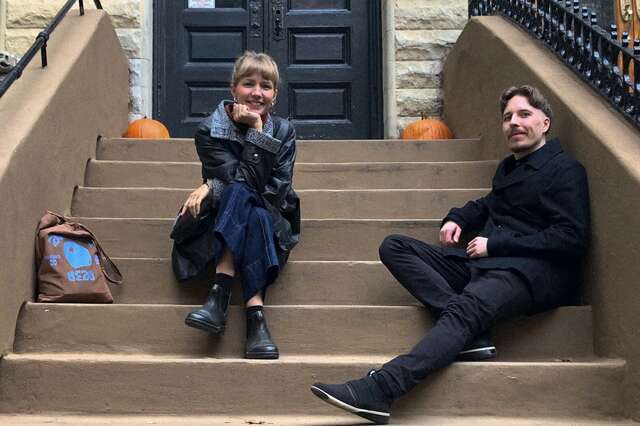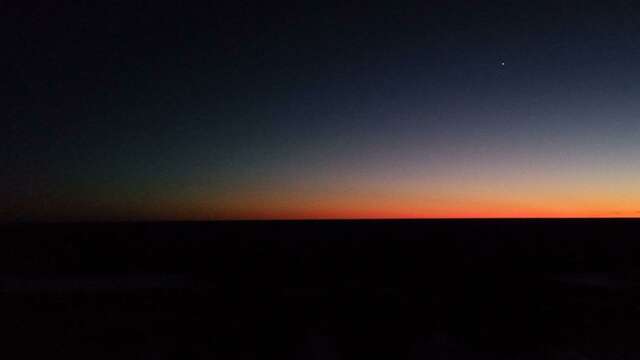Architecture and design in Nordic nature – A new website is launched

Rayann Elzein
Across the Nordic countries, nature tourism has become very trendy. The Design in Nordic Nature project brought together design solutions that make hiking and exploring the great outdoors appealing and accessible. The project encompassing all the Nordic countries also included a series of talks.
The popularity of nature and wilderness tourism has been on the rise in recent years. While the pandemic turned the longing for far-away destinations towards local offerings, the popularity of hiking skyrocketed. The increasing number of tourists puts a strain on the infrastructure of national parks and hiking grounds in regards to the safety of hikers, endurance of structures and protection of fragile nature.
In May, a new website was launched to present information and examples of nature tourism structures in the Nordic countries. Leading up to the launch, a series of in-depth discussions were held in April at the Icelandic embassies in Helsinki, Stockholm, Copenhagen and Oslo.
In the dialogue in Finland, a Finnish architect specialising in wilderness architecture, Manu Humppi, and an Icelandic designer inspired by her home island’s nature, Tinna Gunnarsdóttir, were invited to share their thoughts and approaches. The discussion was led by Design in Nordic Nature project coordinator Anna-Maria Bogadóttir on behalf of Iceland Design and Architecture, and Miina Jutila, who coordinated the Finnish contribution at Archinfo Finland.
Cherishing history, designing future
Both designers have a personal, strong relationship with nature. Although the nature in Iceland and Finland have very different qualities, they both share the purity, integrity and uniqueness of Nordic nature. For centuries, the wilderness has provided us with livelihood, materials, shelter and recreation, but the well-being and preservation of nature requires reciprocity.
In general, nature tourists are looking for peace, quiet and contact with nature. Humppi, who has been hiking and trekking all his life, pointed out that people do not travel to national parks and wildernesses for architecture or design but to enjoy nature. The job of the designer is simply to design a framework that enables the experience.
When designing in the wilderness, unusual challenges may arise. Distances and difficult terrain mean that when building structures such as a wilderness hut, practicality must apply down to the very last detail. Humppi draws inspiration from history: for example, the modern look of the Rautulammi wilderness huts conceals a long tradition of camping norms and habits.
Read more about Manu Humppi's design principles in Archinfo's Finnish Architects in the Spotlight series through this link.
In addition to the durability and timelessness of the structures, sustainable and practical design solutions communicate the importance of nature conservation and sustainability to future generations. The circular economy and use of recycled materials fit in with the cyclical character of nature: old creates new, which in turn contributes to environmental regeneration.
Well-designed structures can protect nature from the impacts of tourism, for example by directing visitor flows to certain routes, thus keeping the surrounding nature as intact as possible. However, Manu Humppi acknowledges that he himself, as an experienced orienteerer, prefers to follow his own paths, and also Tinna Gunnarsdóttir has another approach: with her works hidden away in the wilderness, she wishes to lead the visitors astray across the terrain so that no paths are created. In any case, the impact of nature on our well-being is undeniable, and by protecting the environment we are also protecting our future.

Shared experiences and stories unwritten
Nature is often seen as the polar opposite of urban and everyday life, a chance to escape from the hustle and bustle. Design in nature can offer an opportunity for escapism: it can integrate into the environment and help the hiker to be one with nature.
In her work Stepping Stones, Tinna Gunnarsdóttir united two sides of a riverbed into a new entity with a small and simple act: she placed flat rocks in the water to make it easier to cross the river. Previously accessible only to well-footed hikers, the terrain opens up on nature’s own terms – artificial structures that do not belong in the landscape are not always necessary.
For many people, nature tourism is a soothing and introspective experience of soul-searching but it can also lead to unexpected encounters. In a wilderness hut or by a campfire, strangers come together and share a common, meaningful experience, until each continues on to their own trails. The shelter provides a framework for encounters, sharing stories and writing new ones.
Inevitably, the process of modifying nature involves balancing between different values and conflicts. In addition to biodiversity and landscape, cultural heritage must also be protected. For example, new archaeological sites are constantly being discovered in Finnish nature, the oldest dating back to the Stone Age. It is important to integrate relics and ancient landscapes into new approaches to nature conservation and nature planning, so that the past can live on and yet rest in tranquility and preserve its dignity.
Hiking certainly puts a strain on the environment and leaves a permanent mark on the landscape. On the other hand, the best way to arouse a desire to conserve nature is to experience its charm in person. The past, present and future of landscapes can be tied together through architecture and design so that the long history of national landscapes can be enjoyed and experienced by all – on the terms of the surrounding nature, now and in the future.

Discussions available as podcasts
The Design in Nordic Nature project, which was the backdrop of the discussions in the four Nordic capitals, is part of the Nordic Council of Ministers' Sustainable Tourism initiative, launched under the Icelandic Presidency in 2019. The other sections of the initiative deal with clean energy and nature conservation.
Design in Nordic Nature provides an insight into the laws, strategies and practices that govern nature tourism in the Nordic countries, with a special focus on the building traditions and future visions in the Arctic areas. Examples of contemporary design solutions have been compiled into a design atlas, showcasing 62 destinations across the Nordic countries. From Finland, 15 structures of different scales and functions are included. Architect Tuuli Kassi contributed in compiling the Finnish contribution together with Archinfo Finland.
Find out more about the project at natnorth.is where you can also find all the Dialogues on Design in Nature as podcasts.

